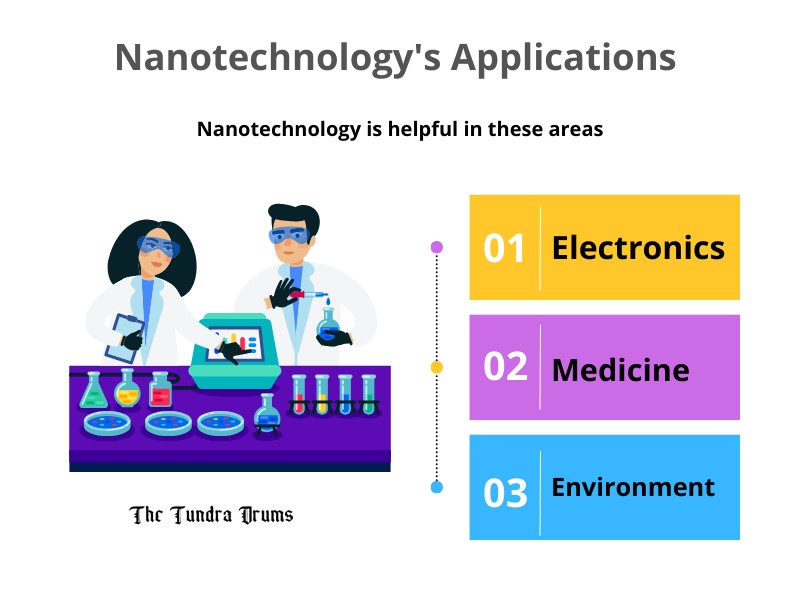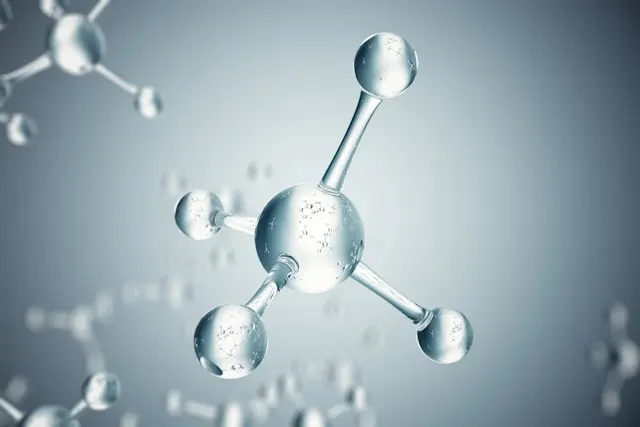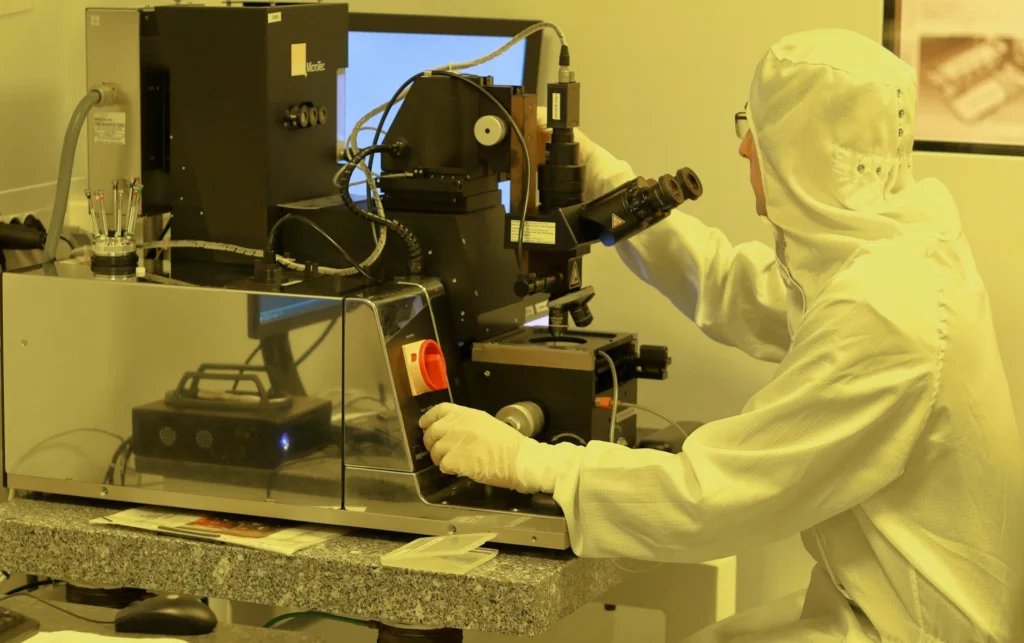Nanotechnology could have significant impacts on Alaska in both environmental and economic terms. In 2023, global nanotechnology investments reached over $250 billion, showing its rapid growth. This technology could improve oil extraction efficiency for Alaska, reducing costs by up to 20%. Environmentally, it can aid in water purification and help manage oil spills in the Arctic, preserving the state’s delicate ecosystems. With an estimated $1.5 billion in annual fisheries revenue, advanced nanotech sensors could also monitor ocean health, protecting this vital industry for Alaskans.
What is Nanotechnology?
This is the study and control of tiny particles at the atomic and molecular level, between 1 to 100 nanometers in size. The word “nano” comes from the Greek word for “dwarf,” showing just how small this scale is. At this size, materials act differently, allowing scientists to create new materials, tools, and devices for fields like medicine, energy, and electronics.
How Nanotechnology is Growing?
| Market | 2023 ($Billion) | 2024 ($Billion) | 2030 ($ Billion) | CAGR (2023-2030) |
| Global Nanotechnology Market | 57.1 | 118.7 | 36.85 (projected) | 11.0% (from 2023) |
| Healthcare Nanotechnology Market | 308.03 | 351.82 | 613.9 | 14.2% (from 2023) |
In 2023, the global nanotechnology market was worth about $57.1 billion. Experts believe it will grow to $118.7 billion by 2030, with a growth rate of 11% every year. The healthcare side of nanotechnology is also booming. In 2023, it was worth $308.03 billion, and it’s expected to grow to $351.82 billion in 2024, with a growth rate of 14.2%.

- Electronics: Making devices smaller and more powerful.
- Medicine: Improving drug delivery, cancer treatment, and diagnostics.
- Environment: Clean up pollution and make water safe to drink.
What Might be a Concern About the Use of Nanotechnology?
Nanotechnology has great potential, but concerns about its impact on health, safety, and the environment exist. These worries mainly focus on the risks posed by engineered nanomaterials.
Health Risks
1. Toxicity: While many nanomaterials show low toxicity levels, some, like carbon nanotubes, may cause serious health issues. These nanotubes could have effects similar to asbestos, potentially leading to lung damage and other breathing problems.
2. Exposure Pathways: Nanomaterials can enter the body in several ways:
- Inhalation: Breathing in nanomaterials is considered the biggest risk. These tiny particles can get stuck in the lungs and even enter the bloodstream.
- Dermal Contact: Nanomaterials can also be absorbed through the skin.
- Ingestion: There is a possibility of accidentally swallowing nanomaterials.
3. Inflammatory Responses: Studies have shown that exposure to specific nanomaterials can trigger lung inflammation. This raises concerns about what could happen with long-term exposure.
4. Bioaccumulation: Another concern is that nanomaterials might build up in the environment or living organisms. Over time, this could negatively affect both ecosystems and human health.
Environmental Concerns
1. Environmental Impact: The effects of nanomaterials on the environment aren’t fully understood yet. Since these materials are so small, they could be released into the air or water systems, and scientists are unsure about how this could harm nature in the long run.
2. Regulatory Challenges: Many existing laws and regulations don’t specifically address nanomaterials, making managing their potential environmental impact hard.
Occupational Safety
1. Worker Exposure: People who work with nanomaterials might face health risks if proper safety measures aren’t in place. It’s essential to have clear guidelines to protect these workers from exposure.
2. Lack of Standardization: There’s also a lack of standardized testing for nanomaterials. Without proper testing methods, it’s challenging to ensure the safety and quality of products made with nanotechnology.
Ethical Considerations
1. Informed Consent: When nanotechnology is used in healthcare, there are ethical concerns about whether patients fully understand the potential long-term effects of the materials they are exposed to.
2. Equity of Access: Nanotechnology treatments and products could lead to unequal access. Vulnerable populations may not have the same opportunities to benefit from these advancements and might also face greater risks.
Why Should Alaskans Care About Nanotechnology?

Alaskans should care about nanotechnology because it has the potential to address several important issues that directly affect their daily lives. Here are a few reasons:
- Environmental Protection: Nanotechnology can help clean up oil spills, improve water purification, and reduce pollution, which is crucial for preserving Alaska’s natural resources and wildlife.
- Energy Efficiency: With Alaska’s focus on renewable energy, nanotechnology could make solar panels more efficient and help develop better energy storage systems, reducing dependence on non-renewable resources.
- Economic Growth: Nanotechnology could boost Alaska’s economy by creating new industries, jobs, and investment opportunities in sectors like healthcare, electronics, and materials science.
- Healthcare Improvements: Nanotechnology offers advancements in medical treatments, such as targeted drug delivery and improved diagnostic tools, which could enhance healthcare in rural and remote parts of Alaska.
How Does Nanotechnology Impact Alaska’s Economy?
Nanotechnology has the potential to significantly impact Alaska’s economy in several key areas, mainly through its applications in the oil and gas industry, environmental management, and overall economic growth. Here are the main points on how nanotechnology affects Alaska’s economy:
Oil and Gas Sector: The oil and gas industry plays a massive role in Alaska’s economy, making up about 85% of the state’s budget. Nanotechnology can help make oil extraction more efficient. Using advanced materials and coatings could cut costs by as much as 20% by improving how things run and lowering energy use.
Job Creation: Alaska has only one known nanotechnology company, Nanotech Energy Solutions Inc. However, as this industry grows, it could create new jobs in the research, development, and manufacturing of nanotechnology products. Nanotech Energy Solutions focuses on energy-saving coatings that protect against corrosion, which is especially important for Alaska’s industries.
– Environmental Management
Oil Spill Mitigation: Nanotechnology provides new ways to handle oil spills, which is important for Alaska’s delicate Arctic ecosystems. Advanced nanomaterials can make cleanup methods more effective, helping protect the environment during oil spill responses.
Water Purification: Nanotechnology can also improve water purification, helping to keep Alaska’s water clean. This is important for the health of the environment and the fishing industry, which depends on good water quality.
– Research and Development
Academic Initiatives: The University of Alaska’s Advanced Materials Group (AMG) is a necessary research effort focused on microelectronics and nanotechnology. While funding has been limited, continued investment in education and research could boost Alaska’s skills in this field and encourage innovation.
Collaborative Efforts: Alaska is working to create partnerships between universities, industries, and communities. These collaborations aim to use research to grow the state’s economy through new technological innovations.
Final Words
Nanotechnology has the potential to bring significant benefits to Alaska, both economically and environmentally. It can make oil extraction more efficient, help clean up oil spills, and improve water quality, which is important for protecting Alaska’s natural resources. Nanotechnology could boost the economy by creating new jobs and opportunities in healthcare and materials science.











